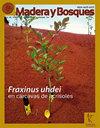Carbon bonds, a sustainability alternative in the Chimborazo Fauna Production Reserve
IF 0.6
4区 农林科学
Q4 FORESTRY
引用次数: 0
Abstract
Payments for environmental services are part of a new and more direct conservation paradigm, which explicitly recognizes the need to create bridges between the interests of landowners and service users. Thus, the soil of the Chimborazo Fauna Production Reserve is a carbon reservoir. Then, it is here where there is a need to conduct scientific studies on its carbon storage capacity under different types of vegetation coverage. For this purpose, researchers elaborated cells for each ecosystem with the help of a geographic information system employing geoprocessing tools; a total of 819 sampling sites were established in 58560 ha. The samples were taken at a depth of 0 cm - 30 cm, and the results were entered into a database in ARC GIS, where a mask was created, extrapolating the carbon content in the entire reserve area. As a result, a higher C content was evidenced in the evergreen forest (BsSN01) and grassland (HsSn02) of the moorland, with 378.16 Mg of organic carbon (OC) and in total, 4 379581.43 Mg of OC that can be offered to the international market in carbon bonds. In this sense, it is necessary to evaluate from an economic-environmental perspective the ecosystem services that the Chimborazo Wildlife Production Reserve offers, in this case, as a carbon store in the soil, so that the economic stimuli are attractive for landowners.碳债券,在钦博拉索动物生产保护区的可持续性替代方案
支付环境服务费用是一种新的更直接的保护模式的一部分,这种模式明确认识到需要在土地所有者和服务使用者的利益之间建立桥梁。因此,钦博拉索动物生产保护区的土壤是一个碳库。因此,有必要对不同植被覆盖类型下的碳储量进行科学研究。为此,研究人员在地理信息系统的帮助下,利用地理处理工具,为每个生态系统精心设计了细胞;在58560公顷的土地上共建立了819个采样点。样品采集深度为0 cm - 30 cm,采集结果输入ARC GIS数据库,并在arcgis中创建掩模,推断出整个保护区的碳含量。结果表明,常绿森林(BsSN01)和草地(HsSn02)碳含量较高,有机碳(OC)含量为378.16 Mg,有机碳(OC)总量为4 379581.43 Mg,可作为碳债券提供给国际市场。从这个意义上说,有必要从经济环境的角度来评估钦博拉索野生动物生产保护区提供的生态系统服务,在这种情况下,作为土壤中的碳储存,使经济刺激对土地所有者具有吸引力。
本文章由计算机程序翻译,如有差异,请以英文原文为准。
求助全文
约1分钟内获得全文
求助全文
来源期刊

Madera Y Bosques
FORESTRY-
CiteScore
0.90
自引率
0.00%
发文量
16
审稿时长
>12 weeks
期刊介绍:
Madera y Bosques (Wood and Forests) is a scientific periodical journal which has the objective of serving as media for scientific and technological research related to forest products, forest management and conservation as well as forest ecology topics and related subjects. It publishes original scientific papers, topical articles, scientific notes or bibliographic reviews. It is a quarterly publication that appears in Spring, Summer and Fall. Ocassionally, special Winter Issues are published. Manuscripts are accepted in Spanish, English and sporadically in other languages. It has no Page Processing Charges and it is published by the Environment and Sustainability Department of the Instituto de Ecología, A.C. (Xalapa, Ver., México).
 求助内容:
求助内容: 应助结果提醒方式:
应助结果提醒方式:


